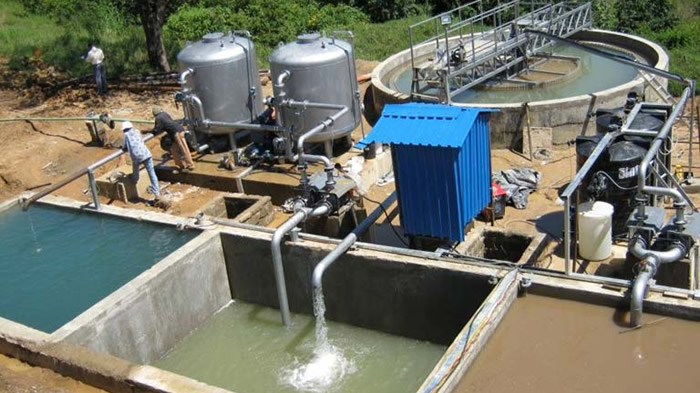The effluent treatment plant is a vital part of any industrial facility. It processes waste water to remove its harmful chemicals, before it is discharged into the local sewer system. A well-designed and maintained effluent treatment plant will eliminate all pollutants from industrial wastewater streams so that they can be used for other purposes within the plant or discharged into oceans or rivers without posing any threat.
Introduction to ETP
An effluent treatment plant is a facility that processes wastewater, or refuse water, prior to discharge into the environment. These plants are designed to remove contaminants from water that would otherwise be discharged into local waterways. The treated water can then be discharged back into rivers, streams and lakes as clean drinking water—or it can be used for irrigation purposes.
An ETP typically consists of three major components: an aeration tank; an activated sludge process unit (APU); and a clarifier/dewatering system. The first two units break down organic matter in the effluent using biological processes such as bacteria colonies growing on media beds within tanks containing nutrients such as ammonia or nitrate ions added by chemical feeders connected via hoses running through pipes directly below each bed so that they don’t get stuck up against anything else when you move around inside it – this keeps everything flowing smoothly all day long without any problems happening anywhere along those lines because everything else remains stable throughout its lifetime regardless whether there’s anything wrong out there somewhere else which might cause problems elsewhere down line too if left unchecked long enough before getting fixed properly later down line once again – but this time hopefully before something else breaks down again due out there somewhere else even though we already fixed things right earlier today thanks goodness!
EFFECTIVE WATER TREATMENT – ESSENTIAL FOR POLLUTION FREE ENVIRONMENT
An effluent treatment plant (ETP) is a facility that treats wastewater before it can be discharged into the environment. This process helps reduce the pollution level of water and make it suitable for reuse or reinjection into a body of water. Waste water treatment is essential for maintaining the quality of our rivers, lakes and oceans. It also prevents soil pollution due to run-off from agricultural activities, industrial plants etc., which may cause damage to wildlife habitat areas in these areas such as wetlands or forests.
What is Effluent Treatment Plant?
The effluent treatment plant (ETP) is a facility that treats wastewater by removing pollutants, solids and other unwanted items from the water. It’s designed to treat the sewage and industrial wastewater before it is discharged into the environment.
The ETP will be responsible for treating all of your sewage before it reaches your drains, sewers or waterways.
Basic Steps of Wastewater Treatment Process
- Primary clarification
- Secondary clarification
- Sedimentation
- Aeration and gas cleaning (if required)
- Biological treatment (adsorption, flocculation, settling) * Chemical treatment
Commonly Used Industrial Waste Water Treatment Systems and Technologies
The most commonly used wastewater treatment systems, technologies and chemicals for effluent treatment are as follows:
- Commonly Used Industrial Waste Water Treatment Systems.
- Commonly Used Wastewater Treatment Technologies.
- Commonly Used Chemicals for Effluent Treatment
Preventive Measures for Effluent Treatment Plant
Preventive Measures for Effluent Treatment Plant
The following preventive measures can be taken to prevent the adverse effects of effluents:
- Use of disinfectants and biocides. Disinfectants are chemicals that kill or inhibit the growth of microorganisms such as bacteria, fungi, yeasts and viruses. Biocides are used as part of a program that is designed to eliminate or control pests on plants and equipment that come into contact with liquid waste streams (i.e., treatment plant effluent).
- Use of antifoams agents in order to reduce foam formation by adding surfactants (surfactants are compounds that enhance the surface tension between water molecules) which are often added to systems prior to outlet piping being connected back into the plants’ primary piping systems
- Antiscalant additives may also be used in conjunction with other chemicals such as detergents/disinfectants when treating wastewater containing suspended solids such as sludge cakes but not necessarily after flocculation has taken place due primarily due reasons outlined above – namely because these types would only need proper pH adjustment prior before being injected back into downstream system components like tanks etc…
The advantages of an effluent treatment plant are amply clear and sufficient to realize the importance.
An ETP is a device that is used to treat waste water. The ETP reduces the discharge of pollutants into the environment by removing solids and suspended solids, which can cause problems for plants, animals and humans.
An effluent treatment plant helps protect our environment from pollution by reducing discharges into rivers & streams. This prevents diseases caused by water pollution such as skin rashes or allergic reactions caused by chlorine exposure. It also prevents damage to ecosystems due to excess nutrients entering soils via surface runoff or leaching through groundwater sources (eutrophication). Finally it reduces the need for landfills because treated wastewater can be reused instead of disposed in them!
Conclusion
With these ETP consulting services, you can be assured of getting the best solution for your plant. In order to make sure that you get the right ETP package, it is essential that you hire a reliable company so that they can provide you with all the necessary information about your specific needs


